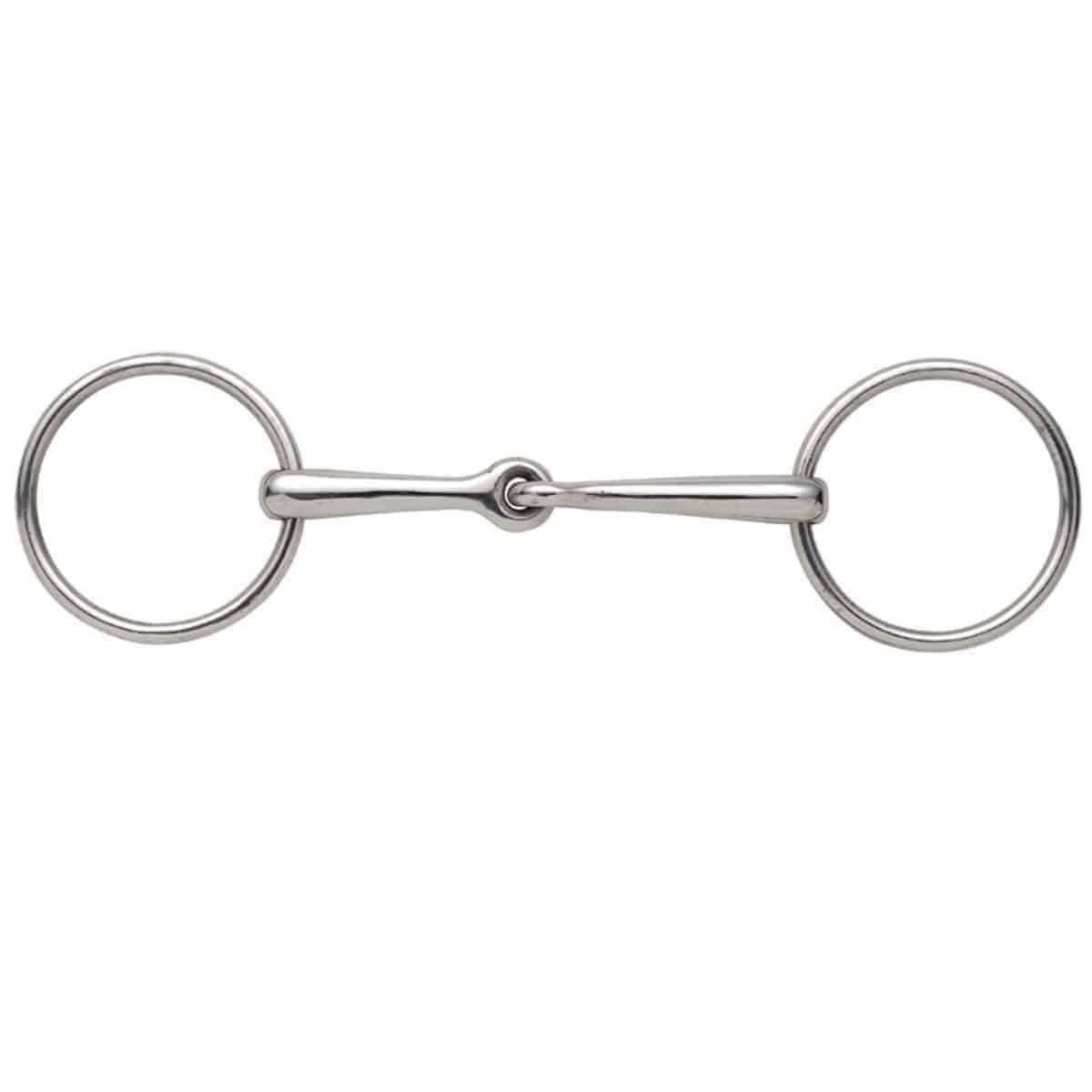The right bit: Single-jointed loose ring snaffle

In the first of a new series looking at different types of bits bitting advisor Matt Waterworth tells you all about the single-jointed loose ring snaffle.
What is it
The snaffle is one of the most commonly used types of equine bit. This version has loose (unfixed rings) and one single joint in the mouthpiece.
How it works
This bit acts mainly on the bars of the mouth. It also puts a little pressure on the edges of the tongue depending on the conformation of the horse’s mouth and to the lips and palate.
What’s it good for?
Loose ring bits help the horse to position the bit where they like it unlike fixed bits such as the eggbutt or hanging cheek snaffle. This helps the horse be more comfortable in the mouth and since the mouthpiece is moveable on the cheek it also helps with horses that are heavy or take hold of the bit. The looser the bit the more it encourages a horse to come off the forehand and work more from behind. Also because it mainly applies pressure on the bars has the effect of lifting the head and so is useful in horses with a low head carriage.
What type of horses does it suit?
If your horse is a bigger breed such as a cob or warmblood and is chunky around the mouth then we usually recommend staying away from single joints because the nutcracker action of the bit creates too much pressure and evasions can occur. Because the joint also acts on the roof of the mouth so if your horse has a low palate – such as Arabs or Thoroughbreds – then we also try to stay away from single joints as this can cause head tossing or shaking.







